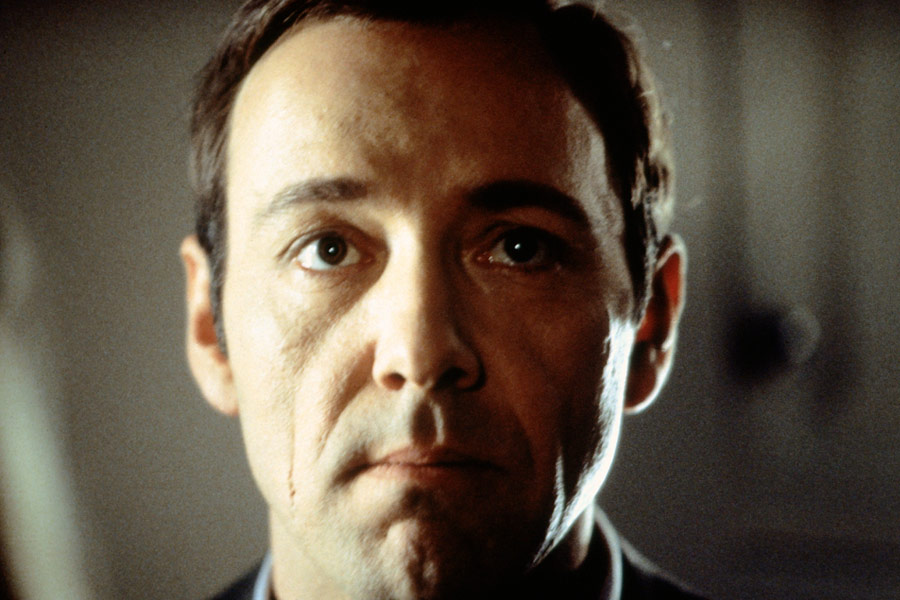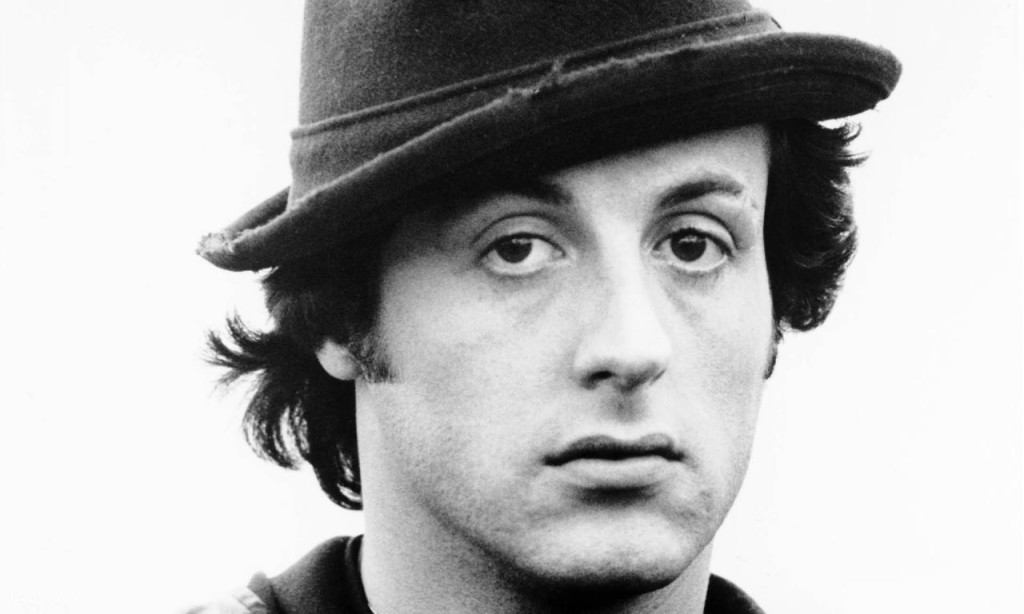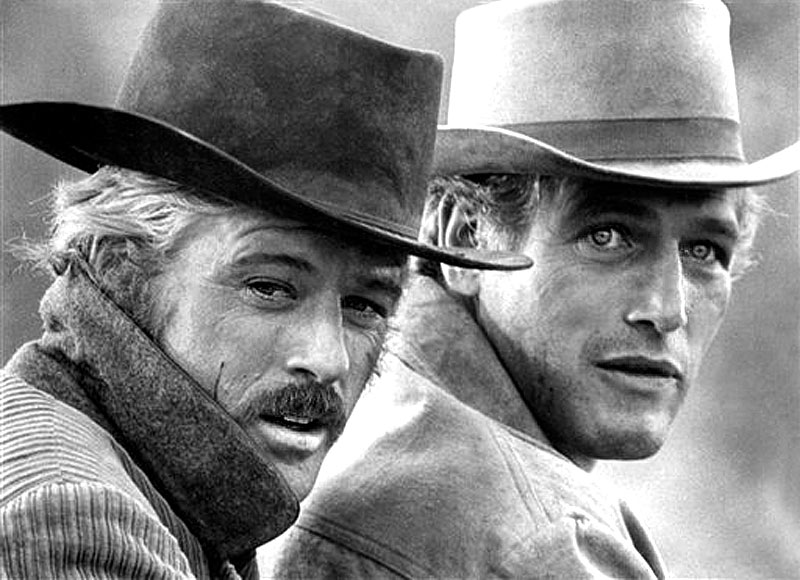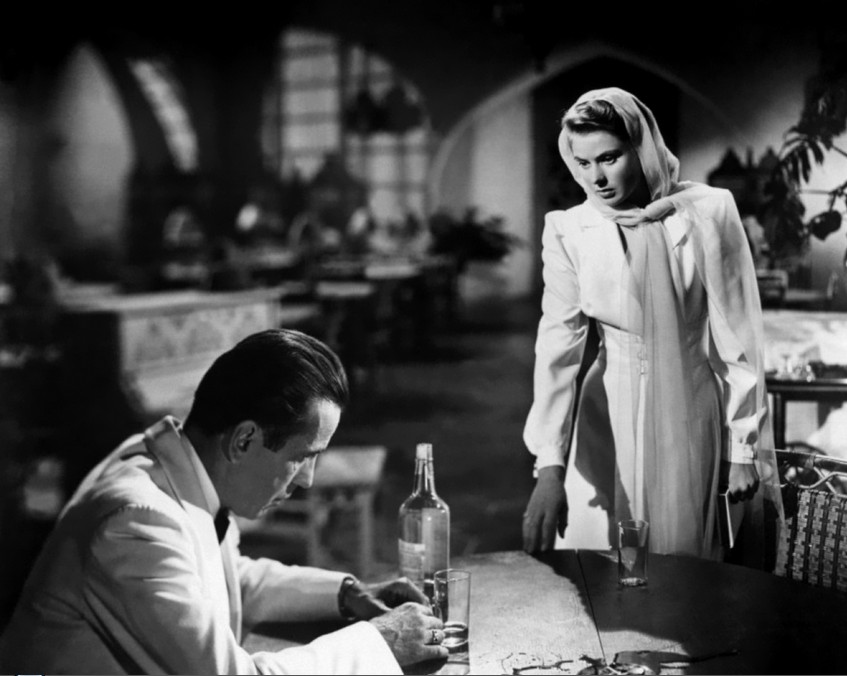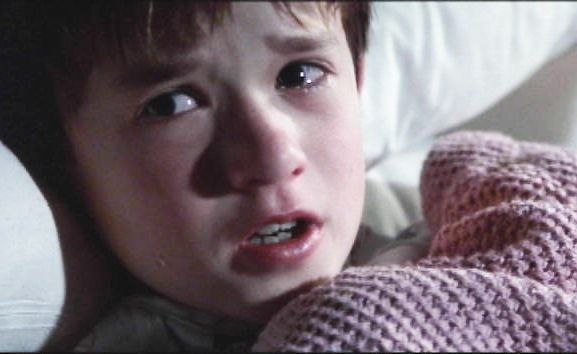Search Results for: 10 tips from
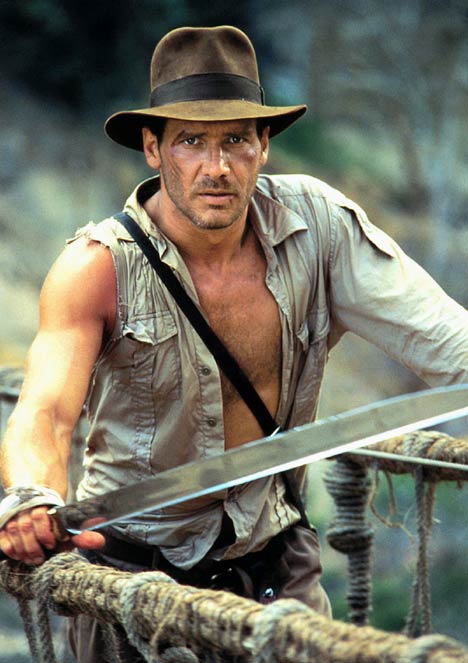 Now THAT’S a memorable character
Now THAT’S a memorable character
Last week, I talked about outlining your plot. This week, I’m going to talk about outlining your characters. The more scripts I read, the more I realize that the thing that separates the men from the boys is character. Characters with flaws, characters with backstory, characters who arc, characters with internal conflict, characters with interesting unresolved relationships. You can feel depth when a well crafted character steps on the page. When I read “Where Angels Die” last Friday, I FELT Parker. I FELT those other characters. The writer didn’t just write those guys on a whim. He (as well as the author of the book) got to know everything about those people. If you want to be a serious writer, you have to do the same. Being able to develop compelling characters is one of the easiest ways to carve out a career in the screenwriting business.
Which leads to the question – How do you do that? Well, I’m not going to lie to you. It isn’t easy. Character-building takes a LOT OF TIME. But it’s time well-spent, as it’s the difference between a character who feels made-up and a character who feels real. The more you know about your character, the more of a real-life-quality he takes on. Because in a way, he’ll start to become real, since he’ll have lived an entire imaginary life in your head. Some screenwriters balk at the idea of working so hard before writing a script. But I’m telling you from experience – Every time I’ve encountered thin characters, I’ve asked the writer how much effort he put into them, and he’s conceded “not much.” And every time I’ve encountered deep rich characters, I’ve asked the writer the same question and they say, “a ton.” So it WILL make a difference. But it requires commitment.
Unfortunately, character outlining isn’t as linear as plot outlining. You’re going to be building multiple documents here, one for each of the primary (and secondary) characters. So with that said, these are the three main things you’re going to want to focus on when character outlining.
1) Character Handprint
2) Character Backstory/bio
3) Character Relationships
CHARACTER HANDPRINT
This is what I consider to be the heart of your character. These are the things that define him, that you can always come back to whenever you’ve lost sight of your character. They’re important because they’re actually going to be coming up in the story (as opposed to the stuff in a character bio, which is all backstory). So create a file for each of your major characters, and start by writing these three things down.
a) Your character’s story goal – What does your character want in your screenplay? You need to know this because every choice he makes will be in service to this objective. Maybe he wants an ancient Ark (Raiders). Maybe he wants a girl (Notting Hill). Maybe he wants to get sober. Maybe he wants to not get killed by aliens (War Of The Worlds). Maybe he wants a life of freedom again (American Beauty). Know what your character wants as it will provide him with focus and clarity (never to be underestimated – I read so many scripts with unfocused unclear characters and they’re all a mess). And don’t just do this for your hero (which is the easiest story goal to figure out). Do it for ALL your characters! Find out what ALL of them want in the story.
b) Your character’s story motivation – What is the reason your character is pursuing the story goal? A character without a motivation will read false because we won’t understand why he’s doing anything. Also, a strong motivation is one of the easiest ways to create a strong character. Sometimes motivations are obvious (Tom Cruise’s character’s motivation in War of the Worlds is to survive). Other times they’re complex (Alonzo’s motivation in Training Day is to frame a rookie cop so he can score a big payday). You need to know why characters are doing things or else every decision they make comes off as false.
c) Your character’s flaw – Everybody’s got a flaw, something holding them back in life. Once you know a character’s flaw, you can create a journey that challenges it. Think of flaws as a one-sentence sound bite a person might use to describe someone else. My friend Jason’s flaw, for example, is that he never follows through with anything. My ex-girlfriend Kristin’s flaw is that she put everyone else above herself. An old co-worker, Doug, never put in the effort required to succeed at his dream. Think of anyone in your life. Chances are, you’re able to come up with a one-sentence sound bite that describes their weakness. This is actually a great way to find a flaw for your protagonist. Go through everyone you’ve known in life, find their defining flaw, and see if it fits your character. Once you have that, you can create a story that challenges the flaw. For example, with my ex-girlfriend, Kristin, I’d write a story where people are constantly taking advantage of her because of how selfless she is. She has to learn, by the end of the movie, how to say no and put herself first.
With these three things in hand, you have the core of your character at your fingertips. But that’s just the core. If you want to really know your character, you’re going to have to know everything about their life…
CHARACTER BACKSTORY/BIO
If you want to take the next step as a writer, you need to create character bios for your characters. This will suck. It will take a lot of time. It will feel like work instead of fun. But it’s the best way to add depth to your characters. So within the same document that you wrote your Character Handprint, you’ll now write up that character’s backstory, broken down from the day they were born to where they are now. The idea here is to write down all of their major life beats. Although it’s up to you how you want to do it, most writers simply write a character bio like they would a story. How long should these be? Some are five pages long. But I’ve seen them get up to twenty pages long. It all depends on how much you want to put into it. Cover anything you think is important, but here’s a cheat-sheet to help you along.
a) When your character was born.
b) Who his parents were (if they’re still alive/together).
c) Where they were born (this will inform their speech pattern and personality. Someone born on the streets of Philly will act and sound different from someone who grew up in the suburbs of Chicago).
d) What kind of person he was growing up (Popular? Outcast?).
e) What kind of school he went to.
f) Who his friends were.
g) Who his first girlfriend was (first kiss, first love, who he lost his virginity to).
h) Where he went to college.
i) His first, second, third jobs.
j) Anything else you’d consider a “major moment” in his life (i.e. loss of a friend, lost the big championship as a kid, a major car accident, jail time, period of being a drug addict).
The more specific you can get, the better. Knowing where your character went to college is one thing. Knowing if he got a full ride or paid with school loans could inform his current financial situation. If he’s still paying off those loans, he might be drowning in debt, which affects his mood, his disposition, his personality. He could be bitter that his expensive education didn’t amount to a more lucrative career. Do you see how the more you know, the more specific and REAL your character gets? Only a tiny fraction of this stuff gets into the script because it’s backstory. But it’s still important because it will inform the decisions your character makes, which is what will make him feel more real. And if you really really really want to know your characters well, use this questionnaire sheet. It’s not mine. It’s been on the web for awhile. But it’s SUPER SPECIFIC and forces you to get to know your character better than you know some of your best friends. Your character is going to be REALLY FUCKING DEEP if you fill this out.
CHARACTER RELATIONSHIPS
You definitely want to map out all the key relationships in your screenplay. And for a relationship to resonate, it should have a central conflict within it, something that’s unresolved. If there isn’t something that needs to be resolved, the relationship probably won’t be memorable. Think of relationships as the story that’s going on behind the story. Your hero battles orcs while searching for the gold. That’s the plot. But he may need his son as a guide, a son who’s never respected him after he deserted the family when our hero was a child. If you do it right, the audience will be more interested in the relationships getting resolved than the actual plot. Story relationships typically boil down to five types. They are…
a) family relationships
b) friendships
c) romantic relationships
d) work relationships
e) your hero’s relationship with the villain.
The typical screenplay will almost always contain the first three. One family relationship gone bad. One friendship that’s suffering. And finally, a romantic relationship that never seems to be on stable ground. Depending on the genre you’re writing, though (say you’re writing an action comedy like the upcoming, The Heat), the focus might very well be on the work relationship (Sandra Bullock needing to work with Melissa McCarthy). Whatever the relationship, your job in the outline is to identify what the unresolved issue is between the characters that needs to be fixed. It might be two cops who don’t respect the others’ work approach (The Heat). It might be a past love who’s run away with someone else and the hero wants her back (Great Gatsby). It might be a father desperately trying to get his daughter’s respect back (Taken).
You can map relationships out in two ways. You can create a document JUST for relationships, or, within each individual character document, include a section for that character’s key relationships. I prefer the latter because a relationship is different depending on whose perspective you’re telling it from. So say you’ve got Rocky and Paulie. On Rocky’s page, you’d describe the relationship as Rocky feeling loyalty towards Paulie and trying to help him. On Paulie’s page, however, you’d describe the friendship as more desperate. He needs Rocky because he doesn’t really have anyone else. Whatever the case, when writing a character bio, write out every character that character comes in contact with, and what the central conflict (or unresolved issue) is between them. Occasionally, there will be little or even no issues between two characters (there’s no conflict between Brad Pitt’s character and his wife in World War Z, for example). But usually, you’ll have something that needs to be fixed.
IN CONCLUSION
There are a lot of people who will tell you this stuff is overkill. And there are some instances where I’d agree with them. If you’re writing your first or second script, for example, getting into all this detail can be counterproductive. You haven’t even learned how to write a scene yet. Getting into who your character was 20 years ago will just be distracting. Once you get past those beginning stages though, you need to OBSESS over character. Because characters are the most memorable part of a movie. When we think of our favorite films, we think of the characters we loved in those films first and then the story. And I can practically guarantee that any timeless character you love wasn’t thought up on the fly. A lot of time and effort was put into making that character feel like a real person. That’s all you’re doing here when you outline. You’re getting to know the people in your story as well as you know yourself so you can write them as if they really exist. Most readers’ biggest complaint is thin characters. I’ve just given you a way to make sure that never happens. Take advantage of it!
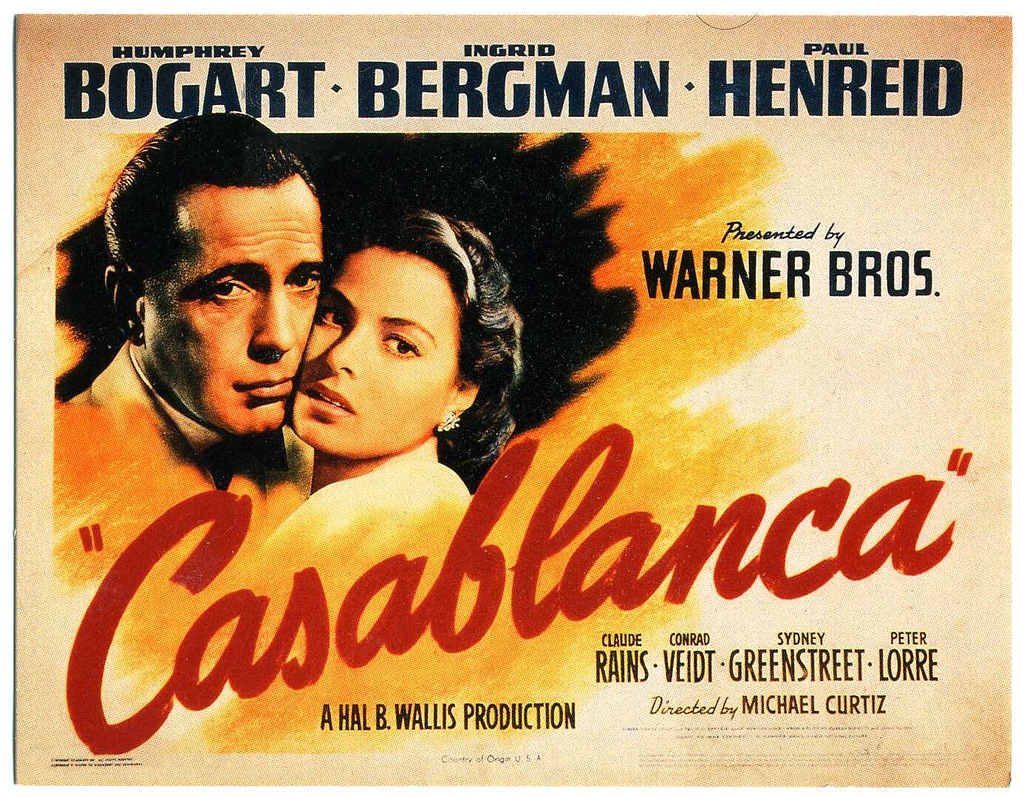
Hey, who says Hollywood’s wrong by not giving a shit about writing these days? Is it REALLY that bad to go into productions with unfinished scripts? They can all point to the fact that one of the greatest movies of all time, Casablanca, went into production only half-finished! You heard that right. Casablanca didn’t have a finished script when they started filming! But here’s what’s always bothered me about this often brought up piece of cinema history. There’s a difference between “writing the script during production” and “writing an already well thought-through tightly outlined script during production.” If all your scenes are in place. If you already know how your characters are going to evolve and change. If you already know where your story is going. And in some cases, you already have the scenes thought out. That kind of “writing during production” actually still has a chance of being good. But if you’re literally making up the entire plot as you go along, that’s a different kind of “writing during production.” As much as I love Gareth Edwards as a director (the guy is going to be a freaking All-Star), you can get a sense of what REALLY going into a production without a script results in by watching his first film, “Monsters.” You’ll spot a lot of repetition, a hazy through-line, and a lack of character development, all things that need to be ironed out ahead of time. My point being, don’t think that because Hollywood lore states that Casablanca’s script was unfinished when filming began, that the underpinnings weren’t in place. It was probably mostly there. There are lots of cool other things we could discuss about Casablanca if we had more time. There were four writers revolving in and out as the script was written. A few of them had different takes on the story, making it even more miraculous that the story came together. For example, there was a lot of internal discussion over whether they should ditch the flashbacks (I personally think they could’ve). To think that they were debating the flashback device all the way back in the 1940s! That argument will never go away! Anyway, since Casablanca is well known for its dialogue, I’ll try to focus a lot of today’s tips on dialogue. But there are some other lessons we can learn here as well. Let’s take a look.
1) Combine scenes whenever possible – This is an old tip, but a good tip. Our protagonist, Rick, digs some money out of his safe for Emil, his casino runner, WHILE discussing with Casablanca’s head policeman, Renault, his planned arrest of Victor Laszlo. An amateur writer would’ve addressed each of these situations separately, taking up valuable screenwriting real estate. Pro writers combine scenes so the story moves along faster!
2) Use a clever exchange/sparring to hide backstory and/or exposition – After Head Policeman Renault tells Rick that they’re going to arrest Victor Laszlo, the writer needs to get in some backstory that Laszlo escaped from a concentration camp, as his time at the camp is an integral plot point. Now a bad writer would’ve had Rick bring this up immediately in his response, resulting in an “obvious backstory” line like, “But he escaped from a concentration camp. He’ll probably escape you.” Instead, the writer diverts attention from the line by creating a playful sparring, allowing him to hide the backstory within the exchange organically: “It’ll be interesting to see how he manages,” Rick says. “Manages what?” Renault asks. “His escape.” “Oh, but I just told you.—“ “—Stop it.” Rick replies. “He escaped from a concentration camp and the Nazis have been chasing him all over Europe.” The sparring here makes the backstory line invisible.
3) For good dialogue, make sure each character has a set of clearly defined opinions about the world/life – The more you know about your characters, the more likely they’ll deliver good lines of dialogue. Let me give you an example. Early in the script, Renault tells Rick’s head waiter, Carl, to give our villain, the Nazi Major Strasser, “a good table, one close to the ladies.” Now say the writer knows nothing about his waiter, Carl, here. Most bad writers wouldn’t. They’d say, ehh, he’s a minor character. I don’t need to know anything about him. In that case, you’re likely to get a weak generic line, something like, “You got it, boss.” But had you given some thought to Carl, you may have decided he harbors a deep resentment towards Nazis, and likes to get in subtle digs at them whenever possible. Now as you approach his response, you have a lot more to play with. It is for this reason that we get the line in the script, which is a thousand times better: “I have already given him the best, knowing he is German and would take it anyway.”
4) When placing a bunch of characters together, make sure that every single character has an angle – This is what’s so great about Casablanca. There isn’t one person in this bar who doesn’t have an angle, who isn’t looking to push their own agenda. Ugarte wants to sell those Visas. Renault wants to impress Strasser. Strasser wants to take down Laszlo. Laszlo wants to escape to America. Rick wants to avoid Ilsa. Ilsa wants to talk to Rick. And to take it one step further, make sure a lot of those angles clash. That’s where you get conflict, which is where you find drama, which is how you entertain audiences. That’s basically Casablanca in a nutshell.
5) Whatever your character’s flaw is, make sure you write a scene that shows that flaw as a choice – Here, Rick’s flaw is that he only cares about himself. He doesn’t stick his neck out for anybody. Therefore, a scene is written where he can either save Ugarte (the man who gave him the visas) or let him be arrested. Ugarte pleads for help from Rick, but Rick just stands by as he gets arrested. Through that choice, we learn his flaw.
6) Stating one’s flaw out loud is no longer in vogue – It’s one of the most famous lines in cinema: “I stick my neck out for nobody.” And yet if you used it today, it would feel way too on-the-nose. Go with an action, as explained in the previous tip, instead. Action (show, don’t tell) always has more of an impact than words.
7) Be “disagreeable” in your dialogue as much as you can – A cute and simple way to spice up dialogue is to never have characters agree with what is said. Have them add resistance or conflict or obstacles or opposing reactions. So when the German, Strasser, says to Rick, “Do you mind if I ask you a few questions? Unofficially, of course.” Rick doesn’t respond in the positive with, “Sure.” He turns it around and says, “Make it official, if you like.” If characters are just agreeing with each other all the time and having really easy conversations, there’s a 99% chance that those conversations are boring as hell.
8) Never underestimate the power of sarcasm during dialogue. It almost always makes the dialogue more fun – When Strasser asks Rick, “What is your nationality?” Rick doesn’t respond with the boring, “I’m a bar owner, in case you hadn’t noticed.” He replies. “I’m a drunkard.”
9) Add extra people to your dialogue scenes – There’s rarely a scene in Casablanca with just two people. I don’t think it’s any coincidence, then, that the movie is known for its great dialogue. Extra characters act as agitators and obstacles to dialogue, which forces characters to be more creative in the ways they talk with one another. Woody Allen, another great dialogue writer, uses this approach a lot as well.
10) Make the “other man” tough to leave, as opposed to easy – Remember that drama usually thrives on tough choices. If you make the choice for any character too easy, it’s obvious what will happen, which is boring. Make it difficult, and the audience will be hooked, as they’ll be unsure what choice the character will make. Here, the “other man” (Laszlo) is about as good a man as they come, so we really have no idea who Ilsa is going to choose, him or Rick.
11) Unless the boyfriend/husband is also the villain – There are certain situations/stories where the “other man” is also the villain. He’s beating our heroine or is the “wrong guy” for her. In those cases, it’s okay for him to be bad. But if the other man isn’t the villain in the story (here, the Nazi, Strasser, is our villain), consider making him a “good guy,” as that’ll make our heroine’s choice tougher, and therefore more dramatically compelling.
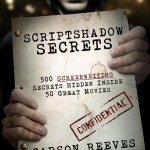 These are 11 tips from the movie “Casablanca.” To get 500 more tips from movies as varied as “Aliens,” “Pulp Fiction,” and “The Hangover,” check out my book, Scriptshadow Secrets, on Amazon!
These are 11 tips from the movie “Casablanca.” To get 500 more tips from movies as varied as “Aliens,” “Pulp Fiction,” and “The Hangover,” check out my book, Scriptshadow Secrets, on Amazon!
They are as elusive as Adele snacking on carrots. And yet, they’re probably the most important part of your script. As you all know, a bad ending cancels out a good movie. And a bad movie can actually be saved by a good ending. That’s because the ending is the last thing the reader (or audience) leaves with. It’s the feeling they will take with them when talking to friends, when talking to co-workers, when going online. If you write a great ending, people will tell other people about your movie, and word-of-mouth will turn your film into a box office star. I still remember when The Sixth Sense came out. The ending of that film was so strong, the movie had virtually ZERO fall-off from week to week at the box office, which is basically unheard of for a wide-release.
So what’s the secret to these stress-inducing third act monsters? Gosh, I wish I knew. Then I could write an article about it and we could all become millionaires. While I may not have all the answers, I’ve got a pretty solid understanding of what makes an ending stick. And while it’s more difficult than following an IKEA instruction booklet, it isn’t as complex as one might think.
Basically, great endings can be broken down into two categories.
1) Something unexpected happens.
2) Our protagonist (or one of the other main characters) overcomes his flaw.
If you go back through your favorite endings, you will inevitably see the incorporation of one of these two techniques. The Sixth Sense – we find out that our hero is dead (unexpected). Star Wars – while trying to destroy the Death Star, Luke learns to believe in himself as Han learns to be selfless (overcoming flaws). The Shawshank Redemption – Our protagonist breaks out of prison (unexpected). In When Harry Met Sally, Harry realizes that the love of one woman is more rewarding than being with many women (overcoming flaw). In Silence Of The Lambs, Hannibal escapes (unexpected).
Now if you’re ambitious, you can try to do both of these things and get a real killer ending. Back To The Future has George McFly learning to stand up for himself (overcoming flaw) as well as Doc dying…then coming back to life (unexpected). That one-two punch of an emotional catharsis stacked on top of a “Holy shit!” surprise leaves us feeling about as charged as a human being can feel leaving a movie theater.
However, those are just the broad strokes. When you get into the nitty gritty, there’s a lot more you have to plan for. First and foremost, you want to know your ending before you start writing your script. Michael Arndt (Toy Story 3, Star Wars VII) says he never writes a script without knowing his ending beforehand and I agree that that’s the way to go. The reason for this is that everything in your script should be pushing us towards our ending. And you can’t write that way if you don’t know what your ending is. Essentially, an ending is a series of payoffs for everything that’s come before it. So we need to know how it all concludes before we can set the stage for that moment.
In addition to this, you must understand the structure of the third act, as it is basically the container for your climax. In most scripts, your character is at his lowest point going into the third act. Whatever he’s been trying to do (his goal), he’s failed spectacularly at it. In other words, everything he’s been chasing has ended in disaster. So in Apollo 13, they’re stuck in this tiny capsule with barely any oxygen and all their controls destroyed. It’s as low as it can get. In that sense, you should look at the third act as a rebirth. It’s an opportunity for your character to regroup from his “lowest point” and give it one last shot.
As you may have expected, it’s also important that you have a strong character goal driving your story. And you’d like for that goal to be stated in the first act. In Indiana Jones, we establish in the first act that the goal is to get the Ark. In The King’s Speech, we establish in the first act that the goal for Birdy is to overcome his stutter so he can speak to his nation. Once you establish a strong character goal, an audience will be interested in seeing if your character can achieve that goal. But the real power in this is that a strong goal maps out your ending for you. That’s because the ending is the conclusion to the question: Does he achieve his goal or not? This is extremely important to understand. Strong character goals lead to the best endings.
Whenever you don’t have a clear goal driving your story, you won’t know what to do with your third act. That’s because nobody’s going after anything. And if nobody’s going after anything, it isn’t clear how the journey is supposed to resolve. Miss Scriptshadow and I rented “Liberal Arts” the other night and it was the perfect example of this. There was no goal in the movie. It was just characters talking to each other. So the writer, Josh Radnor, had no idea what to do with the ending. As a result, it just kind of petered out. That’s not the case with ALL goal-less scripts. When Harry Met Sally is a notable exception. But typically, without that clear goal, you’re not going to have a clue what to do with your climax.
Another important reason to incorporate a goal is that it allows you to place obstacles in front of it. These obstacles make the ending more interesting because they put our hero’s success in doubt. For example, in The Karate Kid, Daniel’s goal is to win the tournament. In the semi-finals, one of the Cobra contestants takes out his leg. This way, in the finals, he must fight on only one leg! That’s an obstacle! You’ll want to throw a few big whopper obstacles at your characters during the climax. The more you can put our hero’s success in doubt, the more entertaining the ending will be.
In addition to this, you’ll want to build an ending that specifically challenges your hero’s flaw. So if your hero’s flaw is that he’s a coward, build an ending where he’s challenged by a bully. If your hero’s flaw is that he’s selfish, build an ending where he can either save himself or save others. This is really important. If your ending doesn’t in some way challenge your hero’s fatal flaw, it will feel random. And if you don’t have a fatal flaw for your hero in the first place, your ending will feel empty. This of course requires that you know how to give your main character a flaw in the first place. There’s not enough room to go into that here, but I’m sure somebody will explain how to do it in the comments section if asked.
From there, as stated earlier, you’d like to come up with that one final unexpected surprise in your climax. This is something I can’t teach you. It’ll come down to you making a unique and interesting choice that the audience didn’t see coming. It doesn’t have to be a twist ending like The Sixth Sense. But SOMETHING unexpected should happen. The Stay-Puft Marshmallow Man in Ghostbusters wasn’t a twist ending. But it was definitely unexpected and fun. Your ending should never be exactly what your audience expects. Even if they know your hero will win in the end, you should add something unique that makes getting to that point a surprise.
So let’s summarize the keys to writing a great ending.
1) Know your ending before you start.
2) Understand where your character’s at at the beginning of the third act (he should be at his lowest point).
3) Write a strong character goal into your central plot.
4) Introduce tons of obstacles into the climax.
5) Make sure your character has a fatal flaw.
6) Build in an ending that specifically challenges that fatal flaw.
7) Add something into the climax that the audience isn’t expecting.
There you have it. Now go write your kick-ass ending!
Pick up a copy of my book Scriptshadow Secrets for more structural breakdowns and over 500 screenwriting tips!
Warning: This is a rare “flu-written” Scriptshadow entry. There are only a few of these in existence. Which means they’ll be worth a lot of money someday. Save yours in expensive laminated paper please. Thank you.
Genre: Cop/Found Footage
Premise: Two cops (and best friends) begin taping their daily exploits, which include numerous busts and adventures.
About: David Ayers (Training Day, The Fast And The Furious) wrote and directed this. It starred Jake Gyllenhaal and Michael Pena.
I did a script review over a year ago and kind of hated it, expecting it to be a huge box office dud. But the movie ended up doing okay (41 mil) and getting a lot of love from critics (85% on Rotten Tomatoes). Hmm, I thought, now I have to watch the movie and figure out how he saved that dreadful script. It was time for some Scriptsahdow script-to-screen analysis!
Writer: David Ayers
Details: Script was 97 pages
I had this grand idea of how I was going to tackle my End Of Watch script-to-screen review. There were going to be charts. There were going to be witnesses. There was going to be a celebrity guest and possibly a spin-off reality show. Something like Storage Wars.
But the thing with the flu is that it doesn’t allow you to think until you restrain it with a large bottle of Nyquil. I call this practice, “Quilling,” and it brings whatever you’re working on into Hubble-like focus. Behold. Beware. Be afraid. What I write below may not be used against me in a court of law.
When Larry David was pitching his “show about nothing” (Seinfeld) to a group of studio execs, the execs focused excessively on the dynamics of the friendships. “Well we need them to not like each other,” they said. “Why?” an annoyed Larry David asked. “Because you need conflict,” the execs said. “You need drama, and drama comes from conflict. If there’s no conflict within the group, then the conversations between everyone are going to be boring.” Furious that the execs were all hung up on this detail, Larry stared them down and said, “Why the hell would you be friends with someone you didn’t like?” The execs stammered about, looked at one another for an answer, but nobody had one. So Larry got his way. There’d be no “conflict” between his core group of characters.
I bring this up because conflict IS a necessary component of drama. We do need it in some capacity in order to make our stories interesting. However, there’s an antithesis to conflict that can actually be worse than having no conflict at all. MANUFACTURED CONFLICT. This is when the writer goes into a movie proclaiming “I’M GOING TO ADD CONFLICT!” Two cops who hate each other for no reason. Two romantic leads who hate each other for no reason. A mother and daughter who hate each other for no reason. No reason, that is, other than that the writer wants to ADD CONFLICT!
Is having no conflict better than that? Probably. But you’re picking between two worst-case-scenarios. Which leaves you severely limited in the storytelling department – the department of “actually keeping people entertained.” These two cops looooooved each other. They’d take a bullet for each other. They pat each other on the back whenever the other makes progress in his love life. They give each other man-hugs and nose-to-nose Whale Rider kisses.
True, you’ve stripped down all the artificial bullshit. There’s nobility in that. I mean in real life, a lot of partners probably love each other. So it’s real. Raw. True. I admire Ayers trying to get to the core of this. But when your Subway fresh take puts you at a dramatic disadvantage in the storytelling department, you better be able to pay up at the end of the line. Those five-dollar footlongs don’t include the meatball sub.
Which is a nice way of saying, “What else ya got here?” And End of Watch didn’t really have anything. I mean, the whole reason I wanted to do a script-to-screen breakdown of the project was that I hated the script and heard the movie was great. I was hoping to see a great movie so I could see what changes they made to save the film or just see how a strong directing vision can save a bad screenplay. I got neither.
In fact, I found the movie to be even more boring than the script. Let’s start with the plot. Oh yeah, there isn’t one. I think I understand the motivation behind this. We’re going for “real.” We’re staying away from common cop-movie tropes. If you add a plot, it all starts feeling manufactured, manipulative. There’s no story in real life because real life is random! Therefore we can add no plot!
Again, I applaud the fresh take. But you’ve already given me two cops who spend three-quarters of the movie telling each other they love each other. So there’s no conflict – and now – NO PLOT! I mean what’s next? Are you going to shoot this as a silent film? Are you going to shoot the whole thing in one take? I mean how many handicaps do you want to give yourself?
 Lots of talking and laughing in this one. Lots.
Lots of talking and laughing in this one. Lots.
I’m DYING to figure out what people saw in this movie. Cause I missed the cruise ship. Is it cool because it felt “real?” I might be able to buy this argument but the acting was so fake-y. There wasn’t a moment in this movie where the actors weren’t doing the “faux-reality” thing. Those wacky off-screen moments we never see in cop films? Like the noogies cops give each other? We get those here! And they feel like they’re trying soooo hard to be spontaneous home video captured moments. It may be that found footage and famous actors aren’t meant for each other. I mean a big reason the found footage format works – and this dates back to Cloverfield – is that you’ve never seen the actors in it before. They were all new faces. So it really did feel like real people.
Speaking of found footage, I’m not sure Ayers ever decided if this was a found footage movie or not. It was found footage in the script (we’re told at the beginning of the script the footage was “found”), but in the movie, it was vague, something like, “These are the lives of two LA PD cops caught on camera.” It still starts, however (like the script), with Jake Gylenhall carrying a camera around the station, claiming he’s taking filmmaking as an elective at night school (one of the lamest motivations for found footage I’ve ever read – there was NOTHING about Jake’s character that made you think he’d be interested in filmmaking). The partners then add pin-cameras to their uniforms and now we have our basis for why this footage was captured.
Except a quarter of the way through the film, we start getting random third-party shots of the character. For example – Jake doing a work-out on the roof, shot from about 100 feet away. Was this another “real person” who just happened to be taping Jake working out and the police later happened upon this footage (Guy comes into police station: “Hey guys. You know that cop here who was in the papers? I taped him working out on the roof the other day! Wanna see the footage?” Errr, noo-oooo.
Look, it’s not a huge deal. I don’t want to present myself as (super nerdy voice) “Every shot must be motivated and make sense” Guy. But it speaks to a larger suspicion, which is that Ayers didn’t really know what he was doing here. He didn’t know what movie he wanted to make. By the third act, we’re seeing almost as many “third-party” shots as we are “found footage” shots. And it just seemed lazy. Like he stopped trying to figure out how to make it found footage, because he realized it would take too much effort.
(MAJOR SPOILER) There was also a major change from the script to the film. In the script, both characters die at the end. In the script, only Jake’s partner dies. Jake holds on and lives. This was about the only positive change I could find about the script to screen transformation. By leaving Jake alive, we have someone to grieve, someone to feel the loss. If they’re both dead, it’s kinda pointless. Neither of them know the other’s dead. Who cares? You needed one of them to grieve so we could grieve with them.
But that wasn’t enough to save this. I was rubbing my eyes 15 minutes in knowing that everything I’d read was pretty much kept intact. And it kept going and going and going. And not in that fun Energizer Hominid way. I need fans of this film to explain it to me. Why did you like this? What in the world was good about it? I was bored to tears!
[x] What the hell did I just watch?
[ ] wasn’t for me
[ ] worth the ticket
[ ] impressive
[ ] genius
What I learned: Manufactured conflict is your evil enemy. Avoid it at all costs! Say you want to add conflict between two characters. There’s Joe, a Central Park birdwatcher, and Frank, his bird-watching pal of 30 years. Manufactured conflict would manifest itself like this for our hack writer: “These two hate each other just because.” You figure that will lead to all sorts of awesome dialogue because they hate each other! And hate is conflict and conflict is good say screenwriting teacher! No, it will feel false and we’ll see through it. Instead, dig into Joe and Frank’s relationship more. Maybe they’ve been friends for 30 years, but just recently Joe spotted a rare never-before-seen Flying Spotted Nested Canary at the park and he’s become a bit of a celebrity because of it. He’s had a few articles written about his discovery. He was given the “New York Bird Watcher Of The Month” award by the city as well. And guess what? It’s gone to his head a little. So now he speaks from a place of superiority (as opposed to equals) around Frank, inadvertently giving him tips on how to spot rare birds, and overall just becoming annoying. This has gotten to Frank, who’s holding his tongue every time the two get into a conversation, as he just wants to scream out at Joe to SHUT THE HELL UP! You see how this conflict emerged from a natural backstory between the two characters? Therefore it makes sense! As opposed to just being slapped on there. Big difference!
First off, I just want to thank everybody who’s written in recently to say how much they’ve gotten out of the site the last few years, from the guy who just started writing a couple of weeks ago to even a couple of well-known Hollywood directors. It appears that while there was a highly vocal negative minority, there are thousands of writers/agents/producers/industry people who love the site and just don’t get into the politics of it. It almost made me reevaluate my decision. But for the time being, I’m encouraged by the new format. Change forces you to see everything in a new light, which often leads to new exciting ideas. And I want to explore some of those ideas in the months ahead.
For now, Monday will usually be a screenwriting-centered review of a new movie release (like today’s). Tuesday is going to be a “10 Screenwriting Tips You Can Learn From [Famous Movie]” article like the format I use in my book (this week’s is The Graduate). Wednesday is going to be a bit of a wild-card, but I’m going to try and use it to review unknown/weird/infamous/interesting screenplays from the past. Thursday will be an article. And Friday will be Amateur Friday.
Also, reviewing recent spec sales isn’t totally dead yet. The big complaint from the detractors seemed to be that I publicly posted reviews and/or sent scripts to people. So, once a week, privately via my newsletter, I’m going to review a recent/hot screenplay. These reviews won’t be posted on the site and you’ll have to go searching for the scripts yourselves, but at the very least, you’ll still be able to see what’s making noise in the industry and learn some screenwriting lessons in the process. It’s not ideal. And it sucks we won’t be able to discuss them. But it’s something. So if you’re not already on my mailing list, you’ll probably want to get on it now.
The Scriptshadow Labs will work its way into the line-up as I piece it together (a Macbook implosion and extensive data-recovery process has slowed things down a little – but don’t worry – we’ll get there). And I’ll probably be using the Tuesday and Wednesday slots to try some new stuff here and there. Here’s to seeing where it all goes! And now, Gangster Squad…
Genre: Crime/Period
Premise: A gang lord in 1949 Los Angeles becomes so big that the only way the cops can handle him is to go off-book and wage a war against his empire.
About: Gangster Squad (here’s my old script review – sorry, still haven’t gotten comments transferred over yet) is based on a number of articles from 1940s Los Angeles newspapers. In an offbeat choice, it was directed by Zombieland director Ruben Fleischer. It stars Ryan Gosling, Sean Penn, and Emma Stone. The script, written by newcomer Will Beall, was very well-received around town. Beall has since been announced as the writer for the Justice League movie. His other LA cop drama, L.A. Rex, landed high on the 2009 Black List, which is what jump-started his screenwriting career.
Writer: Will Beall (based on the book by Paul Lieberman).
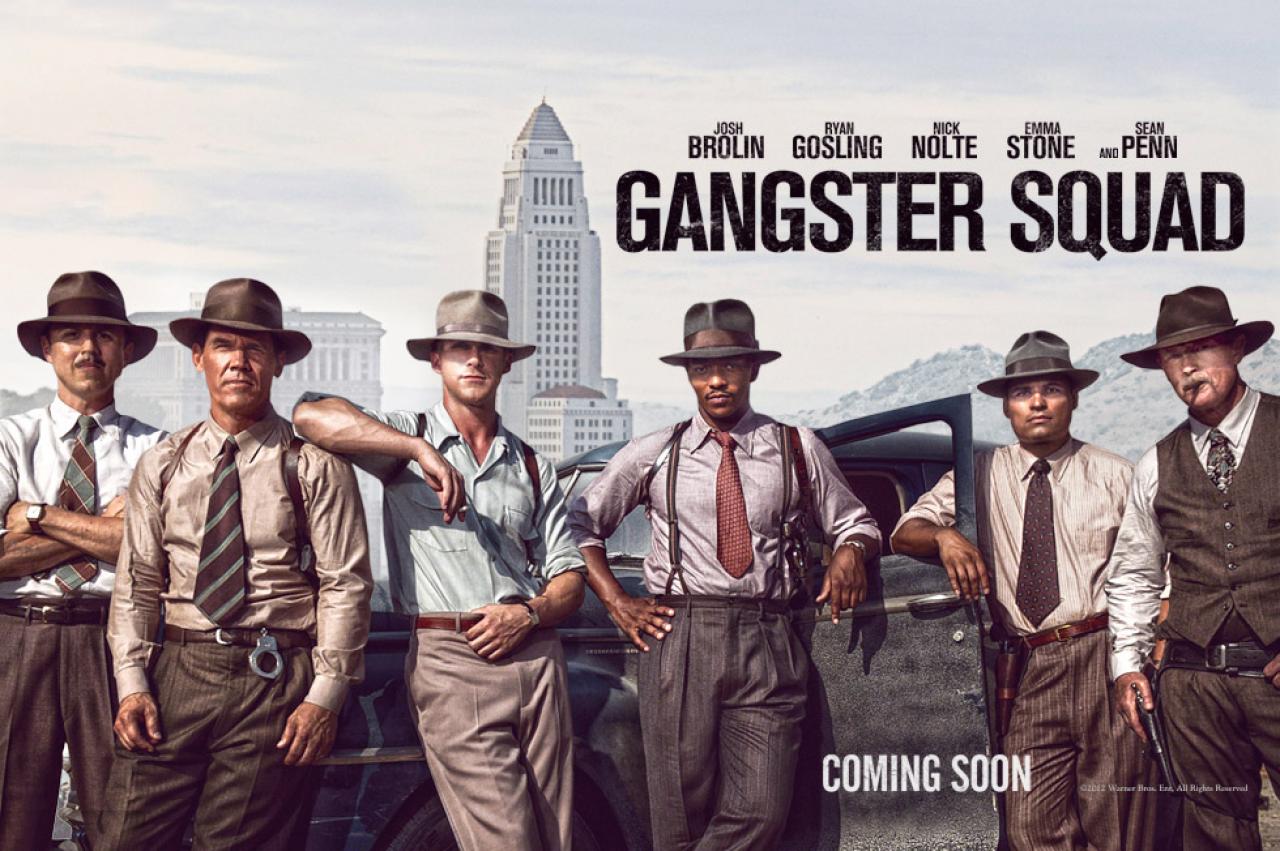
I’m just going to say it. Ruben Fleischer was probably too light-weight of a choice to direct this. I’m all for taking chances on writers and directors. It’s one of the few ways careers can advance in this industry. But that’s the thing with taking chances. There’s a chance they won’t work out. I’d totally forgotten who’d directed this when I went to see it the other day, so I didn’t go in to pre-judge the directing by any means. But when I left, all I could think about was how light-weight the film felt. The look was too glossy (strange choice for a movie about gangsters). The sets (like the Chinatown sequence) felt overly “set-like.” And the casting, outside of Sean Penn, felt uninspired.
I mean this is actually a cool idea. There’s an untouchable gangster running LA. The police can’t compete with him legally. So the chief puts together an off-the-books “squad” who can act with impunity to take him down. Everything, however, depends on the casting of that squad. And here we have Josh Brolin, who’s plagued with a deadness to his acting. We have Anthony Mackie, who plays the African-American officer, who has zero film presence. We have the T-1000 himself, Robert Patrick, who screams “B-Movie.” We have Michael Pena, who’s as light and feathery as a crepe. And we have Giovanni Ribisi, who’s a great actor but doesn’t leave much of an impression here.
Even the major talent, Emma Stone and Ryan Gosling, feel like they’re acting more in a school play about gangsters than a 100 million dollar movie. There’s very little chemistry between the two and Gosling doesn’t carry one-tenth the weight he did in Drive. And Emma Stone just looks happy to have gotten this role so she can stretch her acting chops. Though she proceeds to do so mainly by batting her eyelashes and whispering a lot.
The only actor who carries any weight in this movie is Sean Penn, who is so far above all the other actors that his performance actually backfires, shining a light on just how over-matched everybody else is. As a first-time director, I’m not sure how much the studio bullied Ruben into these casting choices, but from my experiences, it’s usually the big actors that the studio pushes on the director, while letting them choose the lesser guys. And the lesser guys here were the movie’s downfall. The Squad was supposed to be badass. Unfortunately they turned out half-ass.
Which is too bad, because the script itself is pretty decent. It’s not great, but it’s improved from the older draft that I read in July. For those unfamiliar with the story, here’s a quick breakdown:
There’s this mob boss, Mickey Cohen, who’s running Los Angeles into the ground in 1949. If something isn’t done soon, the city will never recover. Enter Sgt. John O’Mara (Josh Brolin) the only clean cop in Los Angeles. He’s recruited to scramble together a “Gangster Squad” to take Cohen down. His key recruit is Sgt. Jerry Wooters (Ryan Gosling) a young selfish cop who finds it’s much easier to let the nasty dogs bark than get in the cage and shut them up. But when the bad guys kill Wooters’ shoe-shine kid (yes, one of the more unfortunate choices in the script), he does a 180, becoming O’Mara’s Number 1. Things get complicated, however, when Wooters falls for Cohen’s girl (played by Emma Stone).
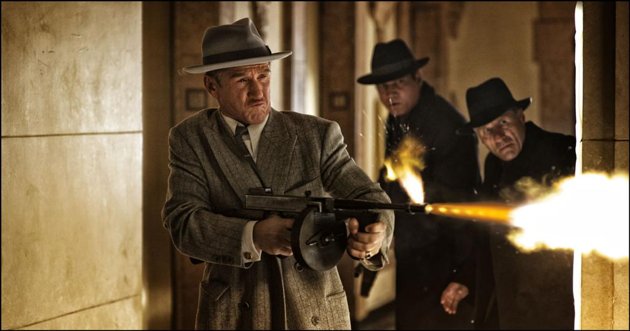
First thing of note here is that the structure is pretty solid. You have the goal (Take down Mickey Cohen), the stakes (if you don’t, Los Angeles crumbles) and eventually the urgency (Cohen is constructing the only wire between Chicago and LA. If he completes it, which will happen by the end of the week, they’ll have no shot against him).
I’m pretty sure this ticking time bomb was an addition to the draft that I read, and it’s something I’ve been noticing more of lately. Some movies won’t establish their ticking time bomb right away. They instead choose to add it later, usually around the midpoint, as a way to up the stakes, as is seen here in Gangster Squad. Just as they’re getting a handle on Mickey, they find out about this wire he’s building which will give him absolute power. And they only have a week to stop it.
Still, I’m always nervous when long stretches of a screenplay don’t have SOME urgency attached to them. Which is why it might be a good idea to offer a temporary ticking time bomb before the major one arrives (if you choose to have the late arriving TTB). So in Gangster Squad, for example, maybe the word on the street is that the Mayor (who’s on Mickey’s payroll) is replacing Police Chief Parker with one of his guys any day now. So Parker makes it clear to O”Mara, “We don’t have a lot of time.” I’m not pretending this is a great idea. I’m just saying it never hurts to look for ways to create an immediacy to your protagonist’s actions.
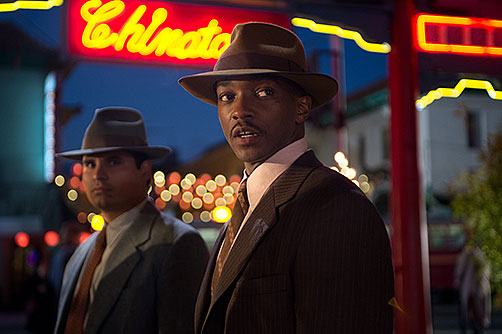
Now, on the plus side, we have some pretty good (but not great) character development here. On Friday, I criticized the lack of character development in “The Last Ones Out,” saying that there were no real choices that the characters had to make. And character development is about establishing a flaw in your character, then giving him choices that challenge that flaw.
Take O’Mara for example. His flaw is that he puts his work above his family. When he’s given a choice early on to either do what’s safest for his family or form the Gangster Squad, he chooses the Gangster Squad. Over the course of the story, as things get more and more dangerous, he continues to choose his work over the safety of his family. This is character development. Tell us what defines your character, then throw choices at him that make him face this flaw in himself head on.
When it was all said and done, Gangster Squad left me appreciating what Scorsese does a lot more. The film will make Fleischer a much better director in the long-run, but learning the challenges of making a movie like this definitely had an effect on the final product. Gangster Squad failed to do the job for me.
[ ] what the hell did I just see?
[x] wasn’t for me
[ ] worth the price of admission
[ ] impressive
[ ] genius
What I learned: Lately I’ve been wondering if there’s a fault in the 3-Act structure. 95% of the movies and screenplays I see get late into the second act and experience this 10-15 minute “boring as hell” lag where all the relationships get resolved and slow dialogue scenes get stacked on top of each other, and the momentum is just sucked out of the story. Gangster Squad was just good enough to keep me watching, but once it hit that Late Second Act, it lost me for good. Specifically the scene where O’Mara and Wooters are sitting on the back porch, drinking, and talking about how things suck. I honestly haven’t figured out the best way to deal with this troubled section. You obviously need to wrap certain storylines up before the climax, but if there are too many “wrap-up” scenes in a row, you lose the audience/reader. Part of the problem may have been the huge character count in Gangster Squad. Too many characters, most of whom we don’t know (who the hell was the guy who hung out with Emma Stone the whole movie??), meant wrapping up character storylines we just didn’t care about. Maybe that’s the big lesson to take away from this. To lessen the length of this potential pitfall section, only include characters you absolutely need in your story. They’re the ones we’ll care about, and therefore the ones whose relationships we’ll WANT to see resolved late in the second act. Even still, I would try to keep this section as short as possible. It kills the momentum of so many screenplays/movies.

